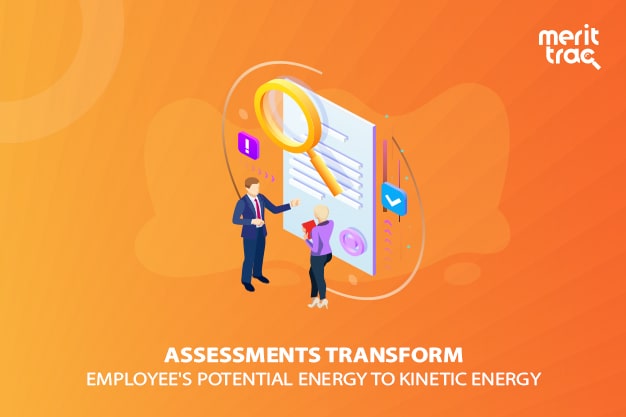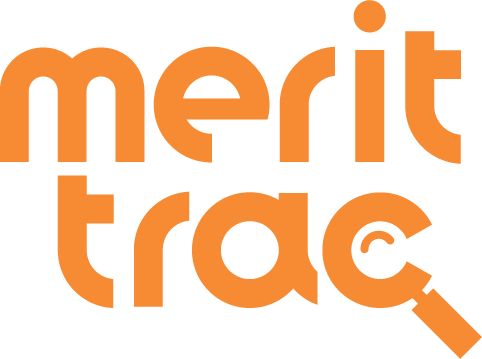
Assessments transform employee's potential energy to kinetic energy
Date: 12/10/2020 | Posted by: Meghana Jitendra, Psychometrician at MeritTrac Services | Category: Behavioural Assessment , Corporate , Employee Assessment
Estimating the current level of employee competenciesis important and assessments have been assisting HR professionals in doing so for quite some time with considerable success. But understanding and harnessing the potential of the employee is what gives a company the competitive edge.
“People don’t get promoted for doing their jobs really well. They get promoted for demonstrating their potential to do more.” - Tara Jaye Frank
Most HR decisions are highly dependent on performance data, appraisals, and reviews from other sources (such as CSAT, peer ratings, etc.), which are essentially historical in nature and quite often marred with possible biases. However, assessments help gain more insight into available data and add an objective analysis of the employee’s potential. Identifying andoptimising potential can further the individual’s career and the organisation’s growth.Thus, the deployment of holistic assessment models adds immense value in such people management and development strategies. Here are some assessment approaches that can help ascertain budding prospects of talents and capability.
Assessments of skills and functional competencies required for the next

role are vital in identifying the best fit or the skill gaps. Skill assessments are usually domain-specific. Skill gap assessments encompass not only gap analysis of skills required for the current role, but also skills required for the future roles, and the emerging skills in the industry. This information can help not only recognise potential but also channelize upskilling efforts.

A right fit for the next role is to be determined not only based on domain expertise but also is based on personality fitment.Personality assessments and assessments of behavioural competencies are highly recommended to examine the fit between the culture of the team and personality of the individual, as well as understand the personality strengths the individual brings to the new role.This is important because, while domain knowledge can be acquired, personality traits and behavioural competencies do not usually lend themselves to change easily and may require intensive interventions.

Learnability, or willingness to learn is the key indicator of behavioural change in a new role with new challenges. Assessment of learnability helps channelize investment for learning and the right talent to bring out their potential. A competency map for any role would be incomplete without measuring the agility or learnability of a candidate/employee who has to cope with the periodically changing job requirements and thereby the skills/abilities that one has to use to successfully complete a given job. This may require them to master new skills, update knowledge and adapt to situations.

In the case of dual-career ladders (management track and non-management track), psychometric assessments become essential in determining which role an employee is to be promoted to for optimal utilization of their services. Assessments of Motivation and Interest give valuable input in promoting the right individual to the right kind of role/career track, to create a win-win for both the employee and the organisation.

Further, assessments measuring potential and acumen also help in identifying the potential for future roles the individual could succeed in, and learning can be steered accordingly, focusing on current learning needs as well as keeping an eye on the horizon for future learning needs. Assessments of potential are especially recommended when the employee has multiple career paths that they can take, such as technical/domain focused v/s managerial roles. The individual’s relative potential for the different career paths can help navigate the focus of learning strategy. Moreover, insights about potential and acumen can help place employees in adequately challenging roles, so that they neither lose interest with easy goals nor get demotivated due to an extremely challenging job.

The 360-degree approach assesses crucial behavioural competencies of the employee, drawing information from both the individuals themselves and their key stakeholders, to paint a holistic picture of their unique strengths, and drive development of crucial competencies. The 360-degree assessment of an individual’s professional competencies is aimed at increasing awareness and understanding of one’s professional strengths and areas requiring improvement and alignment, directing the individual towards realising their potential. With richer and diverse insights, development of latent capabilities would be more purposeful and robust.
An intensive strategy for identifying and developing potential is the Development Centre approach. A Development Centre is an intensive, multifaceted assessment and development methodology where selected candidates are assessed and nurtured on a set of competencies through a range of activities, tasks, tests, and scenarios. The purpose of development centres is to determine and develop the competencies and readiness of the candidates for future roles. Assessment/Development centres objectively assess a candidate’s competency level and readiness for future roles, using reliable and scientific assessment methodology, such as personality assessments, assessment of higher-order cognition, in-basket exercises, group and individual problem solving, Behavioural Event Interviews (BEI), and so on.
Nourishing talent is one of the major challenges faced by organisations today. Assessments can be leveraged to utilise past data to create future development and growth. Assessments can help convert potential energy into kinetic energy: by identifying potential and developing talent for both individual and organisational success.
About the author

Meghana J is the Psychometrician at MeritTrac services, specialising in personality and behavioural assessment development. Her interest in psychology and people development only narrowly beats her love for literature.












 Sales Hotline: USA: +1 646 916 0939 / Others: +91 80619 14700
Sales Hotline: USA: +1 646 916 0939 / Others: +91 80619 14700


